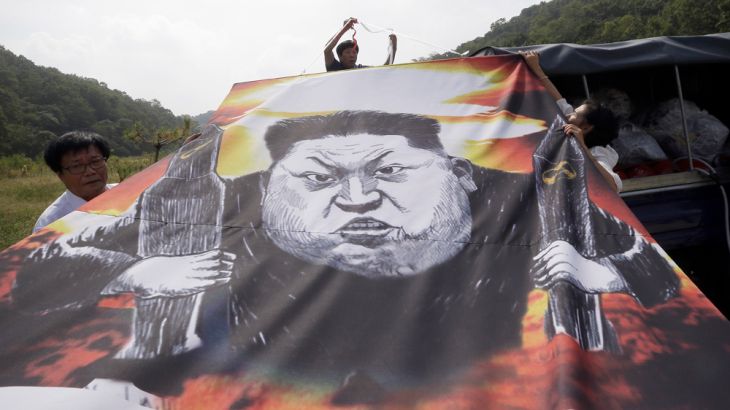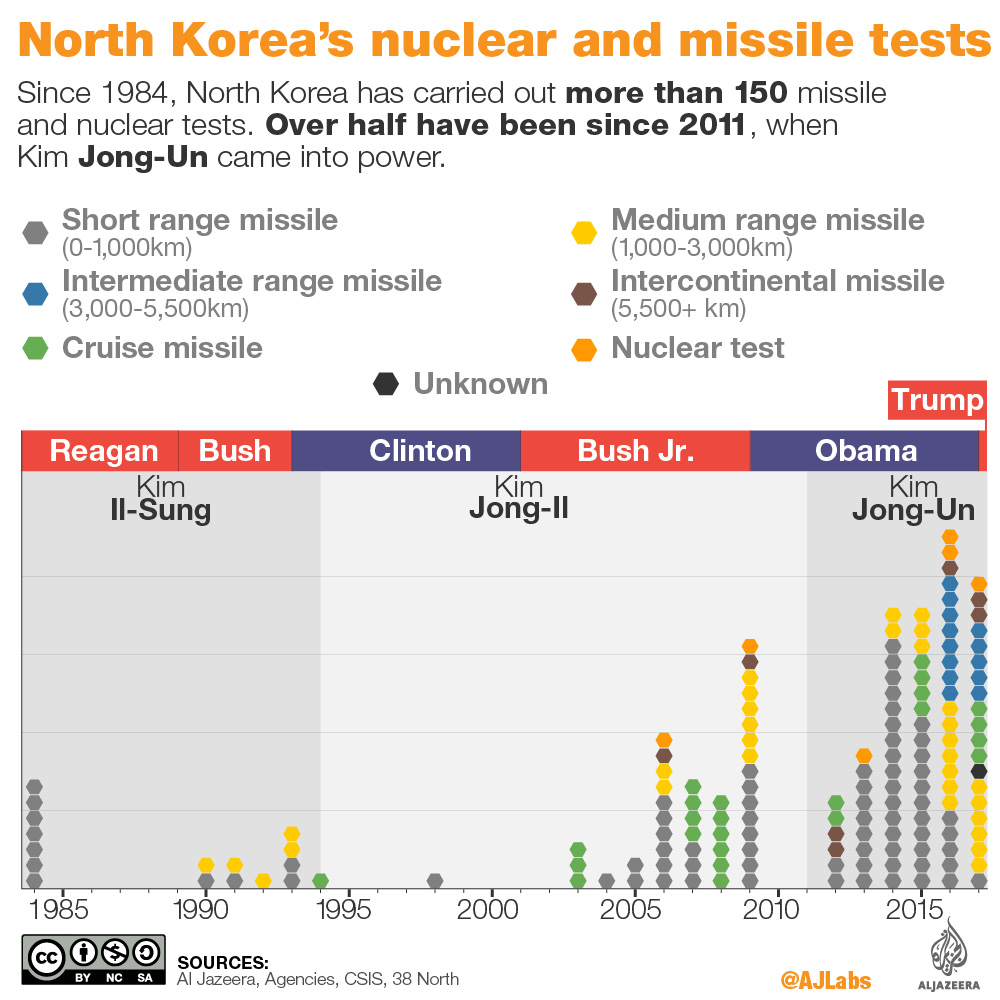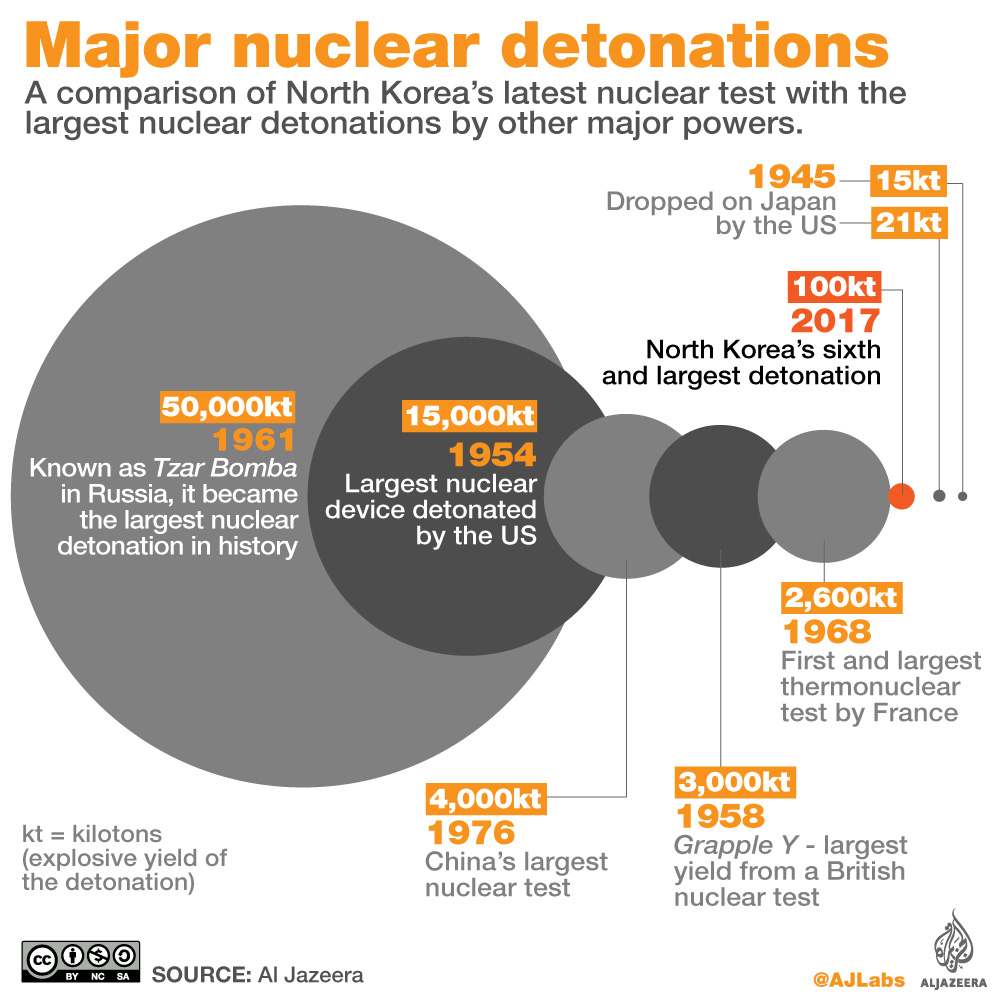UN Security Council to discuss North Korea nuclear test
Second emergency meeting in a week concerning country follows testing of its sixth and biggest nuclear test since 2006.

The UN Security Council is set to hold its second emergency meeting in a week to discuss North Korea after the country conducted its biggest nuclear test, claiming it detonated a hydrogen bomb underground.
Monday’s planned emergency session comes six days after the world body strongly condemned North Korea’s “outrageous” launch of a ballistic missile over Japan.
Keep reading
list of 4 itemsRepublican congressman suggests nuking Gaza
UK’s Sunak to unveil $252m investment in nuclear deterrent, nuclear energy
Why are the US and Japan pushing to ban nuclear weapons in space?
Less than a month ago, the council imposed its stiffest sanctions so far on the reclusive nation.
North Korea is “deliberately undermining regional peace and stability”, the council said on Tuesday when it condemned the missile test, repeating demands for the country to halt its ballistic missile and nuclear weapons programmes.
North Korea claimed “perfect success” on Sunday in its sixth nuclear test blast since 2006.
|
|
Requested by the United States, Japan, France, Britain and South Korea, the Security Council meeting on Monday could bring additional condemnation and discussion of other potential steps.
Theresa May, UK prime minister, called in a statement on Sunday for speeding up the implementation of existing sanctions and “looking urgently” at new measures in the council.
The Security Council aimed to target the North Korean economy earlier this month by banning the country from exporting coal, iron, lead and seafood products.
Profitable exports
Together, those are worth about a third of the country’s $3bn in exports last year. The Security Council could look to sanction other profitable North Korean exports, such as textiles.
Another possibility could be tighter limits on North Korean labourers abroad; the recent sanctions barred giving any new permits for such workers.
The US also suggested some other ideas earlier this summer, including air and maritime restrictions and restricting oil to North Korea’s military and weapons programmes.
READ MORE: North Korea tensions – All the latest updates
South Korea said on Monday that it would temporarily deploy four remaining launchers for a US Terminal High Altitude Area Defense, or THAAD, missile defence system after the completion of an environmental assessment by the government.
Some construction would be carried out to deploy the four launchers at the site in Seongju, south of Seoul, the defence ministry said in a statement.
There are currently two launchers at the location, a former golf course. The ministry did not specify when the launchers would be moved onto the site.

The deployment decision was made by President Moon Jae-in.
China strongly objects to the THAAD, saying its powerful radar can probe deep into Chinese territory, undermining its security.
Earlier on Monday, South Korea’s defence ministry said it was still seeing signs that North Korea planned to stage more ballistic missile launches, possibly including an intercontinental ballistic missile.
“We have continued to see signs of possibly more ballistic missile launches. We also forecast North Korea could fire an intercontinental ballistic missile,” said Chang Kyung-soo, a defence ministry official.
The defence ministry was called by parliament to answer questions about Sunday’s nuclear test by North Korea.
Live-fire exercise
Earlier in the day, South Korea’s military said its ongoing live-fire exercise was meant to “strongly warn” North Korea.
The drill involves F-15 fighter jets and the country’s land-based Hyunmoo ballistic missiles firing into the sea.
Al Jazeera Wayne Hay, reporting from Seoul, said a very quick response was seen from the South Korean government, especially the defence ministry, after the nuclear test in North Korea on Sunday.
“They fired three missiles into the East Sea. The South Korean air force conducted bombing drills, targeting sites in the East Sea that they say replicated – in terms of distance – an attack on North Korean testing sites,” he said.

“What South Korea wants is a large military drill not just by its own forces by also in cooperation with the US. South Korea clearly wants to send a message that they have the ability, should they desire, to attack those missile sites in North Korea as well their nuclear testing facility.
Each new missile and nuclear test gives North Korea’s scientists invaluable information that allows big jumps in capability.
North Korea is thought to have a growing arsenal of nuclear bombs and has spent decades trying to perfect a multi-stage, long-range missile to eventually carry smaller versions of those bombs.
Both diplomacy and severe sanctions have failed to check North Korea’s journey to nuclear mastery.
|
|